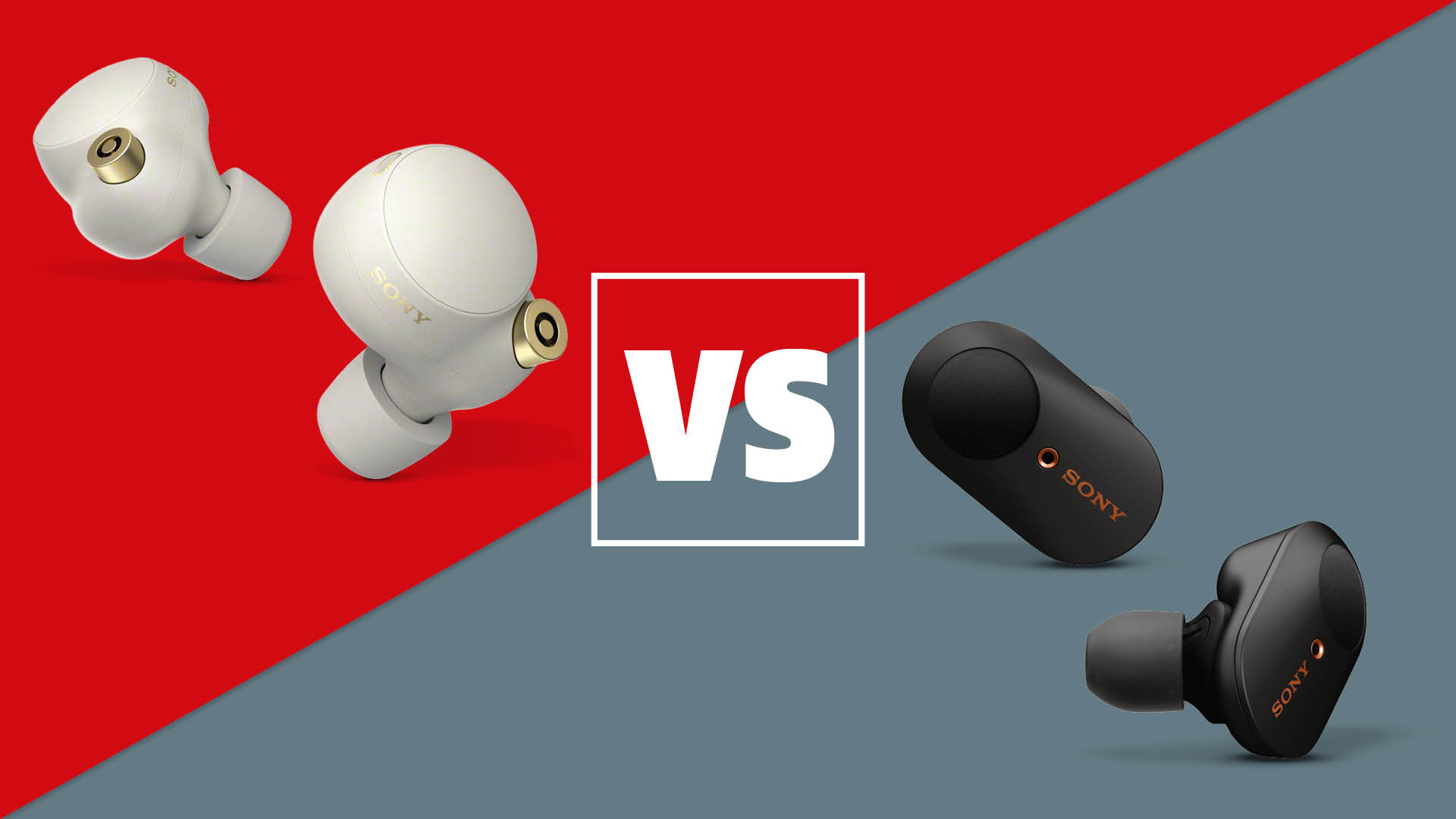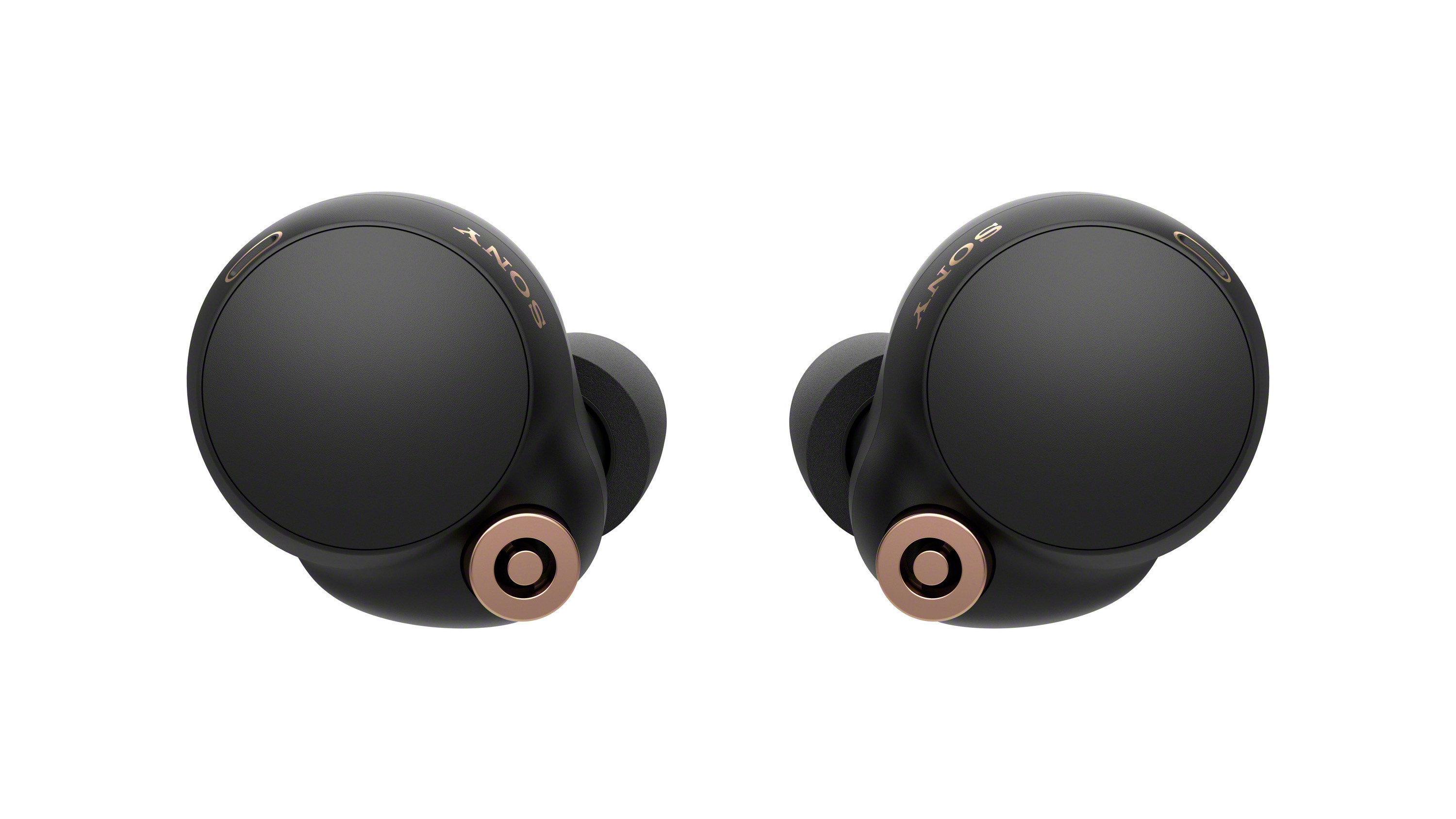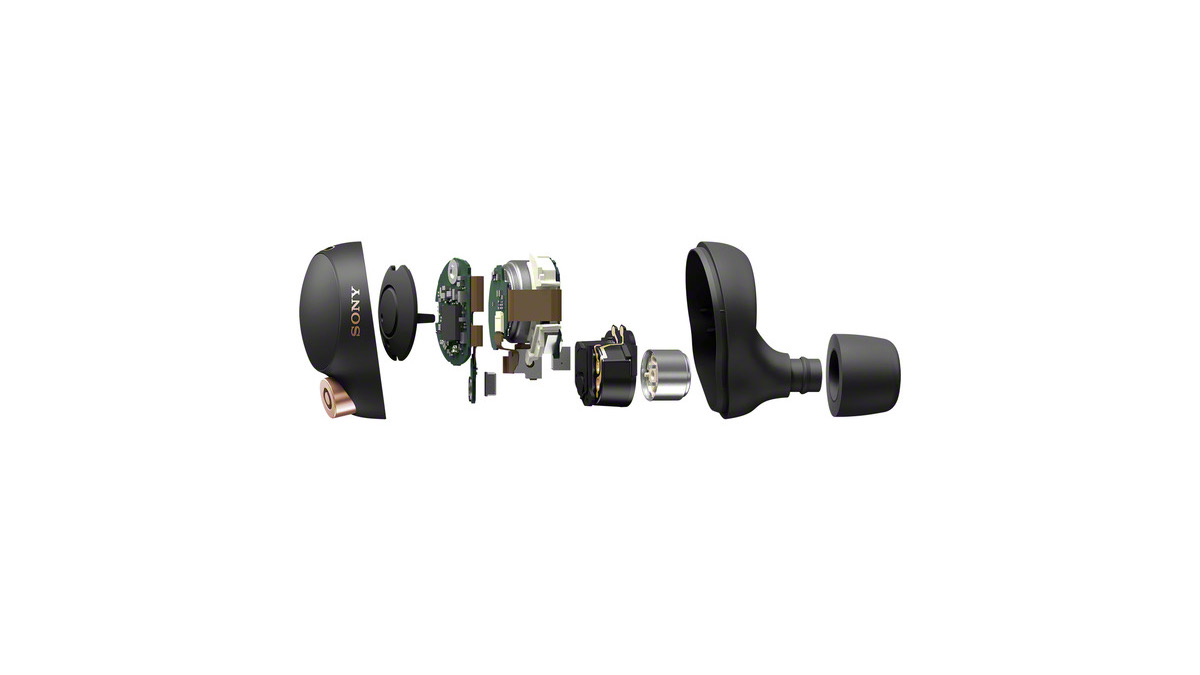Sony WF-1000XM4 vs WF-1000XM3: which are better?
Should you buy Sony's old or new true wireless earbuds?

The Sony WF-1000XM4 are some of the finest true wireless earbuds we've heard, but their predecessors, the five-star and What Hi-Fi? Award-winning WF-1000XM3, are still on sale, and Sony says they're not going away just yet.
The question is, though, which is better? And, if you already own the older model, should you upgrade?
The WF-1000XM4 have a longer claimed battery life, better noise cancellation, water resistance, and support wireless high-resolution audio. While they launched with a more expensive price tag, there are now excellent deals around for these buds. Similarly, if you shop around for Sony WF-1000XM3 deals you'll find them available at a heavily discounted price.
Here, we put the two pairs of noise-cancelling earbuds head-to-head and run down all the major areas worth considering so you can decide whether to spend big on the new WF-1000XM4 or save some money and opt for the WF-1000XM3.
Sony WF-1000XM4 vs WF-1000XM3: price

The Sony WF-1000XM3 have topped our list of best true wireless earbuds since they launched back in 2019. Back then, they arrived on the scene with a price of £220 ($230, AU$349), however, you can now get a pair for around £140 ($179, AU$188).
The Sony WF-1000XM4, meanwhile, launched at the more expensive price of £250 ($280, AU$500). However, we've since seen them drop to well under the £200/$200 mark, especially during the Black Friday 2022 sales.
The XM3 may be technically cheaper, but with new features and improved sound quality, nabbing the XM4 at prices as low as £159/$178 is an absolute steal.
The latest hi-fi, home cinema and tech news, reviews, buying advice and deals, direct to your inbox.
**Winner: Sony WF-1000XM4**
Sony WF-1000XM4 vs WF-1000XM3: battery life

One of the big things to consider with wireless earbuds is battery life. Features are all well and good, but poor battery life can ruin the user experience.
The WF-1000XM3 offer six hours from the buds themselves, along with another 18 from the carry case, giving you a total of 24 hours before needing to find some power. That's pretty standard for a pair of noise-cancelling earbuds.
The WF-1000XM4 last for eight hours on a single charge, but the carry case only provides another two further charges. This means the total battery life remains the same at 24 hours.
Both offer marginal improvements to battery life with noise cancellation turned off, and both have quick charging. The XM3 can offer 90 minutes of playback in 10 minutes, while the XM4 give you an hour from just five. If we were heading out for a day of heavy listening, we'd reach for the newer model.
**Winner: Sony WF-1000XM4**
Sony WF-1000XM4 vs WF-1000XM3: build and comfort

The first thing that strikes us about the WF-1000XM4 is the shape. The distinctive 'squashed pill' look of the XM3 has been replaced by a more conventional, rounded design that's 10 per cent smaller.
Another notable change for the WF-1000XM4 is the redesigned ear tips. They're made from polyurethane and feel like a silicone-foam hybrid. Sony claims this helps the headphones provide better noise isolation and you can use the Sony Headphones Connect app to test just how good your seal is. Disappointingly, you only get three different sizes of tip to choose from in the box.
The older WF-1000XM3 come with no fewer than seven different sizes of tip to try out: four ‘hybrid silicone’ buds and three ‘triple-comfort’ buds.
Both the WF-1000XM4 and the WF-1000XM3 sit differently in your ear. The former rest more snugly in your ear opening, while there's more earbud outside your ear with the latter – it can feel bulky for those with smaller ears.
We don't have any major issues with both pairs when it comes to comfort, though, and we'd happily use either for long listening sessions.
**Winner: Draw**
Sony WF-1000XM4 vs WF-1000XM3: features

Being some of the best true wireless earbuds around, these Sonys are not short of features.
The XM3 are powered by Sony's QN1e HD noise-cancelling processor, which also takes care of the DAC and analogue amplification duties. Like the WF-1000XM4, they support SBC and AAC codecs, but not aptX HD.
They also use Sony's DSEE HX sound processor, which can upscale low-bitrate music files to near hi-res quality.
Noise-cancelling comes as standard, while there are some other modes to get your teeth into. Ambient Sound allows in more outside noise to make you aware of your surroundings, while Quick Attention lets you hold a quick conversation without having to take the earbuds out.
The WF-1000XM4 boast a completely new Integrated Processor V1, a Sony chip that, along with new 6mm drivers, makes for better noise-cancelling and improved sound quality. Instead of DSEE HX, the XM4 get a new DSEE Extreme engine for upscaling low-quality audio files. For hi-res audio, there's support for Sony's LDAC codec, which means you can listen to files up to 32-bit/96kHz over Bluetooth at up to 990kbps.
Sony's WF-1000XM4 also get a new speak-to-chat feature – the headphones recognise when you're speaking and pause the music so you can have a conversation without taking the earbuds out of your ears. It's a neat feature, but because it takes a second or so to start working once you've started talking, it can be slightly annoying.
The carry case for the XM4 boasts wireless charging and the battery can be boosted by placing it on the back of compatible smartphones, such as the Sony Xperia 1 III.
They also support Google's Fast Pair feature for fuss-free pairing with an Android device, too. More of a Microsoft fan? Its Swift Pair feature is also supported, for quick pairing to Windows 10 devices. The XM3 offer no such options.
Lastly, one of the big differences between the two is that the WF-1000XM4 are IPX4 water-resistant, whereas the older model offers no such protection. So, if you're wanting a pair for the gym or your weekly run around the local park, there's really only one option.
**Winner: Sony WF-1000XM4**
Sony WF-1000XM4 vs WF-1000XM3: call quality
The WF-1000XM4 combine Precise Voice Pickup technology, beam-forming and a bone conduction sensor to try and ensure phone calls are clear and focused, and that outside noise is kept to a minimum. They even boast Automatic Wind Noise Reduction, which helps give calls an extra level of clarity for the person on the other end of the line.
The WF-1000XM3 aren't terrible when it comes to answering phone calls, but they are affected more by external noise, especially wind. If you think you're going to be using them a lot for work calls as well as commuting and leisure activities, we'd opt for the new model.
**Winner: Sony WF-1000XM4**
Sony WF-1000XM4 vs WF-1000XM3: noise-cancelling

The XM3 are great noise-cancellers, but in our opinion, the WF-1000XM4 are even better.
The Integrated Processor V1 is more powerful and advanced than the XM3's QN1e, and that new 6mm driver unit also helps. It has 20 per cent more magnet volume than its predecessor, which helps the headphones' precision when cancelling out certain low frequencies.
Combine that processing with those new earbud tips and you have some of the best noise-cancelling we've heard from a pair of wireless earbuds.
**Winner: Sony WF-1000XM4**
- Sony WF-1000XM4 vs Bose QuietComfort Earbuds II: which are better?
Sony WF-1000XM4 vs WF-1000XM3: sound

Both pairs of headphones share similar sonic traits.
There’s clarity across the board and a sense of rhythmic precision that allows both pairs to switch pace effortlessly. They are both musical, dynamic and detailed performers, but the WF-1000XM4 take it to another level.
You'll hear the biggest difference in the bass – the XM4 sound more revealing, with leading edges crisper and better defined. There's a greater sense of clarity, which allows more texture and detail to shine through. They are also slightly better balanced than the XM3, but this model is now a couple of years old, so we'd expect the XM4 to have moved the game on. And they definitely do.
**Winner: Sony WF-1000XM4**
Sony WF-1000XM4 vs WF-1000XM3: verdict
Looking at the whole picture of what both pairs of headphones are capable of, it has to be a win for the XM4. They're smaller, more efficient, water-resistant, have longer battery life and boast more advanced features. Crucially, they also sound better and have improved noise cancellation.
While they can be pricier than the XM3 earbuds, we've seen the Award-winning XM4 at some superbly discounted prices that make them even better value. If you want one of the best true wireless earbuds around on the market right now, your choice has to be the Sony WF-1000XM4.
MORE:
My biggest problem with Sony’s WF-1000XM4 wireless earbuds is finally being fixed
Another true wireless showdown: Apple AirPods Pro vs Sony WF-1000XM3: which are better?
Here are the best wireless earbuds
What Hi-Fi?, founded in 1976, is the world's leading independent guide to buying and owning hi-fi and home entertainment products. Our comprehensive tests help you buy the very best for your money, with our advice sections giving you step-by-step information on how to get even more from your music and movies. Everything is tested by our dedicated team of in-house reviewers in our custom-built test rooms in London, Reading and Bath. Our coveted five-star rating and Awards are recognised all over the world as the ultimate seal of approval, so you can buy with absolute confidence.

